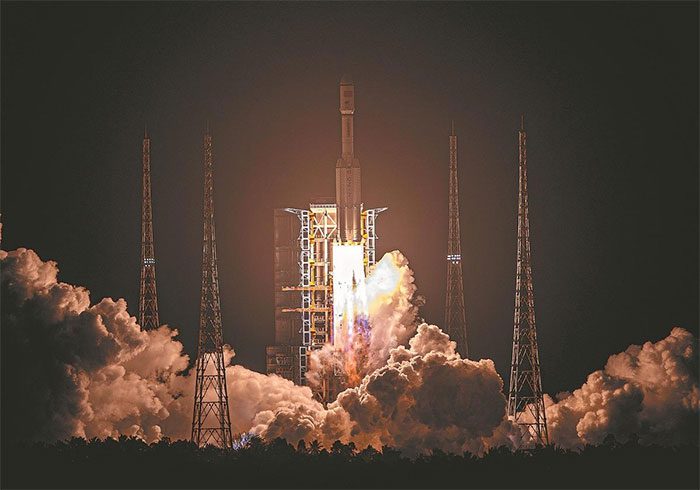The Tianzhou-7 cargo spacecraft from China was launched at 10:27 PM on January 17 (local time) and successfully docked with the Tianhe core module of the Tiangong space station at 1:46 AM on January 18, according to an announcement from China Central Television (CCTV).
In the early hours of January 18, Tianzhou-7 successfully connected with the Tiangong space station after being launched the previous evening from the Wenchang Satellite Launch Center in Hainan Province.

The Tianzhou-7 cargo spacecraft was launched by the Long March-7 rocket.
This space transport vehicle was launched using the Long March-7 rocket, carrying more than 260 items weighing over 5.6 tons, including about 90 kg of fruits and Lunar New Year gifts for the crew currently on duty at the space station.
This is the first mission among four planned launches for China’s crewed space program this year. Previously, the country announced plans to launch crewed Shenzhou-18 and Shenzhou-19 missions, along with two cargo spacecraft to the space station in 2024.
Chinese media reported that Tianzhou-7 is currently the most powerful cargo spacecraft in the world. Previously, according to the China Manned Space Agency (CMSA), the Tianzhou-6 cargo spacecraft had left the space station complex and entered independent flight on January 12. This spacecraft is expected to re-enter the atmosphere soon, with most parts burning up upon re-entry and the remainder falling into a designated area in the South Pacific.
Tiangong serves as China’s permanent outpost in space. This space station currently orbits Earth at an altitude of approximately 400 km, consisting of three fixed modules: a core module and two laboratory modules. The station regularly welcomes crews and cargo spacecraft to maintain its operations in space.
In the latest video clip from Tiangong, the Shenzhou-17 crew enjoyed vegetables grown in space as part of their daily meals. They also decorated the Tianhe core module with traditional lanterns to enhance the atmosphere for the upcoming Lunar New Year celebrations.
Starting with Tianzhou-7, the frequency of cargo transport to China’s space station will decrease to three times every two years, instead of the current two times a year, in order to reduce transportation costs between space and Earth.




















































